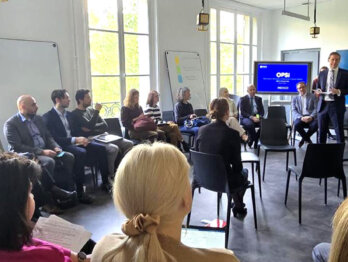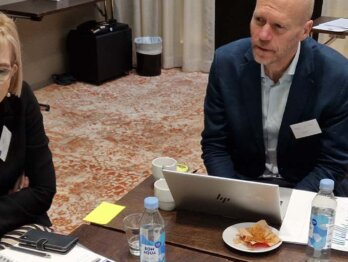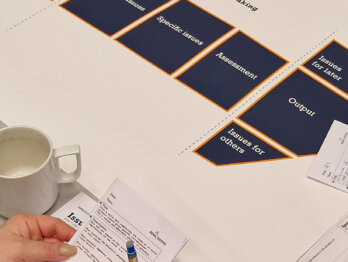The Triple Challenge of Embedding Strategic Foresight in Government

The OECD Directorate for Public Governance (GOV) is working closely with the Portuguese Centro de Competências de Planeamento, de Políticas e de Prospetiva (PlanAPP) on Strengthening Decision Making and Policy Development in Portugal. The project, which covers four specific modules, supports PlanAPP in becoming a core competency centre in the Portuguese public administration by enhancing its institutional and administrative capacities. PlanAPP, a new unit positioned within the Presidency of the Council of Ministers in Portugal, aids the centre of government in its policy co-ordination role. The unit provides evidence-based information to design and reframe strategies, supports better decision-making by adopting prospective approaches, and reinforces the ability of the public administration to anticipate and adapt to emergent and possible changes.
Yet, these goals rely, among others, on strategic foresight, which is the ability of organisations to consistently perceive, make sense of and act upon ideas about future change as it emerges in the present. Based on its expertise concerning module 3, Supporting decision-making with strategic foresight, the OECD Observatory of Public Sector Innovation (OPSI) is working with PlanAPP to strengthen capacities in this area. This includes developing activities and interventions to steward the necessary government systems, functions and capabilities to institutionalise strategic foresight. OPSI is also collaborating with PlanAPP to highlight best practices in OECD countries and demonstrate how strategic foresight methodologies and tools can equip governments to make better decisions and design policies that consider the strategic implications of plausible future scenarios.
On June 28th, as an opportunity to engage with the principles and practices of foresight, OPSI and PlanAPP organised a collaborative session on How strategic foresight can shape public policy. The session presented approaches to embed strategic foresight in government for a futures-oriented public administration and brought together approximately 60 Portuguese Government actors from 26 public sector organisations.
Portuguese officials were introduced to OPSI’s foresight and anticipation expertise, coupled with concrete examples of the institutionalisation of foresight structures in governments around the world and approaches and processes to answer existing design and implementation challenges. International experts, including Peter Glenday and Piret Tõnurist, presented the mechanisms of anticipatory innovation governance (AIG) as well as the value of a systems approach to foresight to aid national planning and policy-making. The event also provided an opportunity to reflect on institutional arrangements and the practical application of strategic foresight in Finland, profiting from the insights gained from the latest report on Anticipatory Innovation Governance: Towards a new way of governing Finland.
Particularly in uncertain environments, the coupling of strategic foresight under the AIG aegis is essential for strengthening administrative capacity in support of current and future societal needs and organisational resilience. However, to assist governments on their road to a future-fit public administration and public policy landscape, this session touched on three challenges that need to be considered in that process:
- Closing the gap between strategic foresight and policy action;
- Adopting an ecosystem perspective in order to embed strategic foresight in governments; and
- Transforming and adapting government functions to effectively institutionalise and apply strategic foresight.
The challenge of connecting anticipatory thinking with actions in the present
“We have to think of strategic foresight as a value chain towards change processes in organizations and across government and tying actions to different types of activities.” – Piret Tõnurist.
Anticipatory innovation governance (AIG) is the ability of governments to address the impact gap between outcomes generated through strategic foresight work and policy action. Tõnurist and Hanson (2020) explain that strategic foresight is “designed to inform policymakers but not support them in engaging with a deliberative process”. For this, it is necessary to implement institutional functions (e.g., budgetary and legislative) and mechanisms (e.g., legitimacy and organisational capacity) in order to create demand and provide the necessary mandates to craft policy responses with foresight interventions.
Piret Tõnurist, Senior Project Manager and Innovation Lead at OPSI, presented the AIG model, first launched in the report Anticipatory innovation governance: Shaping the future through proactive policy making. AIG mechanisms – by matching actions to policy purposes and goals – play a crucial role in paving the way to bridge the impact gap between foresight practices and policy action in government. As an illustration, we can refer to current risk assessment frameworks used by governments worldwide. Before 2020, many OECD countries had already envisaged pandemics as a highly probable risk. However, there was very little government preparedness and action towards what it would actually look like in a plausible scenario. Systems are usually not proactively prepared for these types of crises and even less so if we consider a context of existential risks (i.e., risks that can endanger human life on earth).
The final government objective should not be to adopt strategic foresight in abstract terms, but rather to leverage it as a means to action, from policy development to decision-making processes. Within the European Commission, foresight has provided support to EU missions by strengthening and preparing “EU institutions and policies for alternative future scenarios”. Examples can be found in ‘Mission Foresight’ reports for climate change, cancer, and soil health and food. With the availability of future scenarios built on strategic foresight practices, governments can subsequently identify and reinforce the appropriate AIG mechanisms to reframe policies and catalyse innovation that helps confront increasing global challenges (see Figure 1).
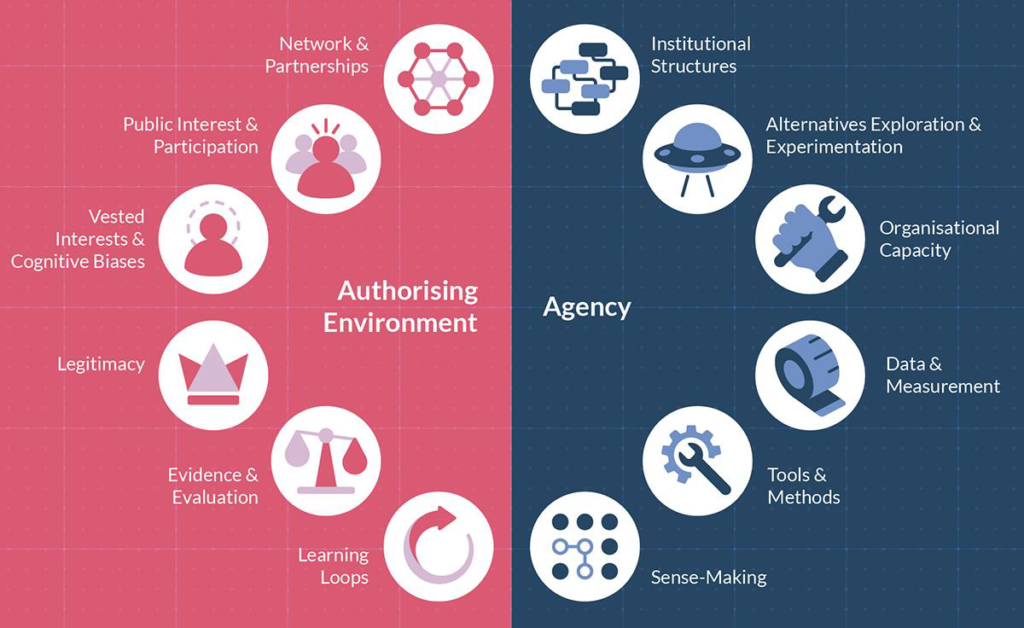
The challenge of developing a strategic foresight ecosystem in governments
“No country we looked at has a perfect system. Each one is both a product of their culture, their capacity and the different ways they applied foresight.” – Peter Glenday.
Participants were given access to research findings from the recent foresight report by the School of International Futures (SOIF). SOIF researched how governments, communities, and organisations around the world have developed strategic foresight ecosystems that integrate long-term thinking into policy-making. Strategic foresight ecosystems should not consider government sectors or organisations as isolated entities. They should appreciate the relationships between socio-cultural and government contexts and interconnections among capability features, such as people and processes, that make foresight useful and sustainable (see Figure 2).
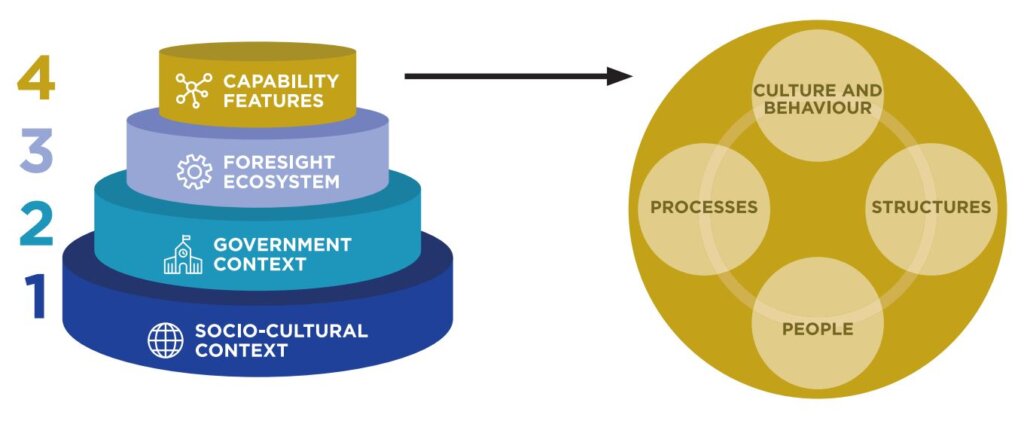
Acknowledging that there is no “silver bullet” to create a perfect foresight system, the report highlights critical questions that need to be addressed to build strategic foresight ecosystems and generate impactful interventions:
- Axial place and role: Establishing a solid central foresight unit that co-ordinates across departments and has the mandate to employ futures work;
- Societal and policy relevance: Connecting the work to national strategies, policies and societal needs (ensure that marginalised voices are heard);
- Sponsorship: Ensuring leadership buy-in and “champions” of futures work in order to disseminate and sustain foresight over time; and
- Capacity-building: Establishingcapacity-building support for public and civil servants to learn how to use foresight effectively and harness knowledge created by generating alternative futures into decision-making.
The challenge of adapting governmental functions to institutionalise strategic foresight
Over the past two years, OPSI has been working with the Government of Finland to better understand how to tie strategic foresight outputs (insights gained) into policy actions (impact). This work highlighted the importance of adapting existing roles, e.g., in the Ministry of Finance and in the Ministry of Justice, and embedding new government functions in order for Finland to more efficiently integrate its anticipatory capacity into public governance and policy steering.
Nine functional actions (see Figure 3) were proposed to systematically integrate anticipatory practice across the Finnish Government. From these, two new functions were identified as crucial to enhancing Finland’s anticipatory governance system:
- The Government Transition Function would support the transition of one political term to another and maintain consistency and continuity of long-term reforms, continuous and iterative learning and avoid the loss of know-how and insights in the process.
- The Government Planning Function would look into how governments analyse and diagnose emerging issues in order to assign these issues to those with the necessary resources and responsibilities to create demand and a mandate to undertake strategic foresight.
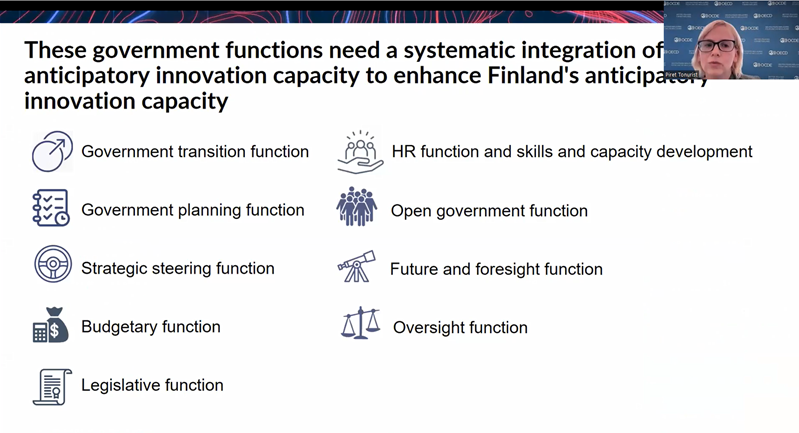
The road ahead: Bridging the impact gap
The development of responsible, sustainable and fit-for-purpose strategic foresight in government requires using robust evidence-based instruments and the active contribution of stakeholders. PlanAPP is seeking to integrate strategic planning into policy-making, promote prospective capacities and become a competency centre for the Portuguese public administration.
The involvement of stakeholders is key to define strategies at the national level. These co-creative processes can increase awareness of the positive gains, build legitimacy for and nurture the positive implementation of strategic foresight from the onset.
“When we are talking about strategic foresight for technology, demography, climate change, we can see that these are so transversal. The contributions from different ministries and public services are very important. We kind of know each other through informal networks, but the challenge for me and the starting point is the mandate and then the governance. Why are we doing this? Who is doing what? This way, we can start understanding what people are currently working with and the forums they are participating in either [at the] national or international [levels] so that we can actually build something that is meaningful on the political and technical dimension.” – Participant of the collaborative session.
Finally, Portuguese participants at the collaborative session pointed out that strategic foresight requires a systemic approach that is aware of and enables synergies across stakeholders. Furthermore, this approach should break down governmental silos to establish clarity of processes, roles, and practices. Based on this, participants concurred that centre of government units, such as PlanAPP, could take on a community liaison role, acting as a facilitator to coalesce various public actors and ministries, and to ensure that the rich knowledge co-created through strategic foresight is applied in Portugal’s national planning and policy design.





